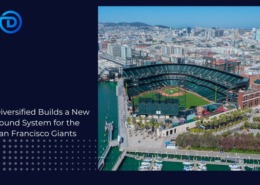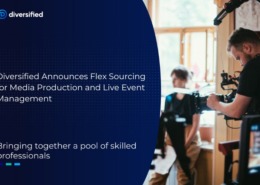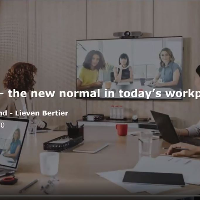BLOG
A Turn of Events
Are Virtual Events Here to Stay?
One of the biggest challenges posed by COVID-19 has been its impact on the way we connect and interact. While social distancing has kept us physically apart, we’re leveraging technology in new ways to regain some semblance of our day-to-day interactions. At the height of the uncertainty, it seemed like everything would come to a standstill–but virtual communication is helping to power us forward. The events industry has been severely impacted by the global pandemic with performances, conferences and celebrations being postponed or cancelled throughout the end of 2020. However, in many circumstances, technology is providing new outlets and helping to propel planned events forward by leveraging a virtual platform.
Over the last few months, there have been a number of virtually-hosted alternatives to traditional in-person events. From virtual graduations such as ‘Dear Class of 2020’ to virtual conferences including Apple’s recent online-only software conference and InfoComm 2020 Connected, virtual events are proving that, while not able to fully replicate the in-person event experience, they offer unique benefits that deliver a successful event in their own right. Presently, with no clear end in sight for when people can safely gather together en masse, virtual events are the way forward, but will this be the case beyond COVID-19? With a number of major events successfully delivered in the past few months, organizations are seeing the logistical, cost-effective benefits of hosting virtual events using video technology for partners and clients. Virtual events open doors to a larger audience not limited by time or location. Attendees can register from anywhere in the world, eliminating costly travel expenses, and corporate budgets no longer limit the potential number of attendees. The lack of barriers also means opening up your event to more guest speakers and exhibitors to offer more enriched and varied content. Eliminating travel and distance for events also minimizes the amount of time invested by both attendees and exhibitors who are able to attend at their convenience.
While virtual events may be less labor-intensive to run, their success lies in the thorough planning of the end-to-end user experience for attendees. From seamless online registrations to engaging content delivery, each touchpoint for attendees works to leave a lasting positive impression.
Foremost is ensuring your event is easily accessible with flawless audio and video technology. Online video technology, such as Brightcove’s leading enterprise video platform, offers custom, immersive, live and always-on experiences. The Brightcove Virtual Events Experience is a solution that helps you customize, scale, monetize and launch your virtual event–whether it’s your annual client event, sales kick off or local field event series.
The global pandemic shown us all how far technology can drive business. In the case of online video platforms, the outlook is positive and likely to reshape the way we host events even after the pandemic’s restrictions are lifted. But for right now, it’s the closest to “connected” as we can get.
The biggest question arises around whether virtual events can capture the essence of in-person networking and event experiences. Diversified’s senior VP of global marketing, Anthony Cuellar, says that at a time like this, it is more important than ever to communicate and connect with partners and clients. “When you go virtual, it’s a little more difficult, talking at a much higher level about products and particular needs they solve,” he says.
Diversified has overcome this by creating multiple digital touchpoints to connect with clients virtually, through webinars and podcasts, and now through Virtual Events with Brightcove. The face-to-face conversations are nice but not necessary, he says.
Just as with traditional events, the success of a virtual event revolves around the content, delivery and experience. You must make sure that you are augmenting the event with great virtual content, both during and following the event to deliver a seamlessly connected end-to-end audience experience. Whether in-person or over the internet, keeping the end user experience and stakeholders’ needs in balance is sure to deliver an exciting event that provides a multi-dimensional experience.








